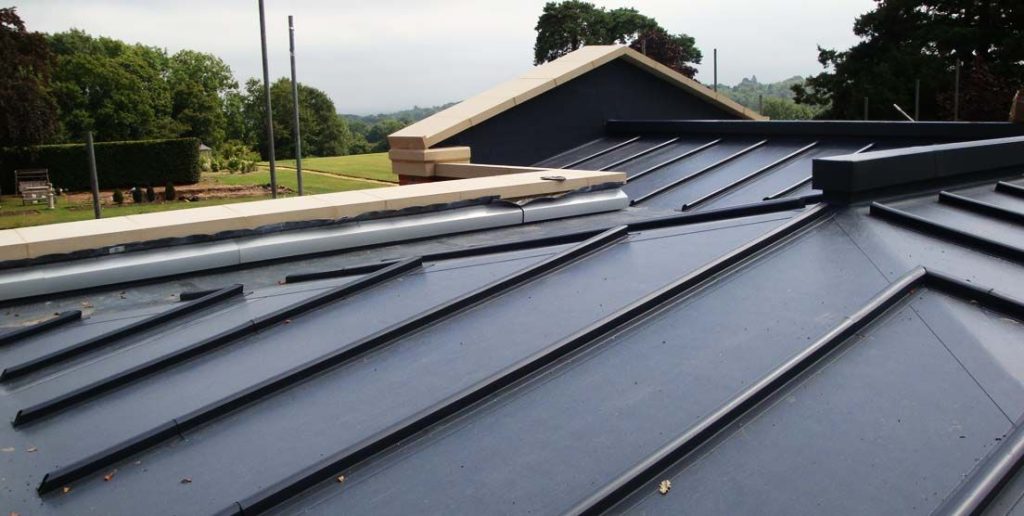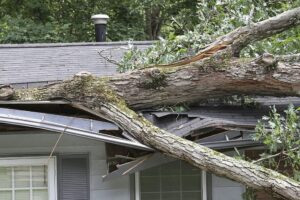When it comes to commercial buildings, choosing the right roofing system is crucial for the structure’s longevity, energy efficiency, and protection. Your roof is one of the most significant investments in your property, and making the wrong choice could lead to costly repairs, inefficient energy use, or damage to the building itself. With so many options available, understanding the benefits and limitations of each roofing system is essential to making an informed decision.
This guide will help you navigate the various commercial roofing systems, including their pros and cons, so you can select the best option for your building.

Key Factors to Consider When Choosing a Commercial Roofing System
Before diving into the different types of commercial roofing systems, it’s essential to understand the factors that should influence your decision. Here are some of the key considerations:
- Building Type: The kind of building you own will greatly influence the type of roofing system you should select. For example, a warehouse will have different roofing needs compared to an office building.
- Budget: Every project has budget constraints. While some systems may offer greater longevity, they may come at a higher upfront cost. Balance your budget with long-term benefits.
- Weather Conditions: Consider the climate in your area. If your building is in a region with heavy rainfall, snow, or wind, you’ll need a system that can withstand those elements.
- Longevity and Durability: How long do you expect the roof to last before needing replacement? Some roofing systems may offer extended durability but require more maintenance.
- Energy Efficiency: Energy-efficient roofing materials can significantly reduce your heating and cooling costs, providing long-term savings.
- Maintenance: How much maintenance will the roof require? Some systems are more prone to damage and require frequent inspection, while others are lower maintenance.
Types of Commercial Roofing Systems
Here are some of the most common commercial roofing systems, each with its own advantages and disadvantages:
1. Built-Up Roofing (BUR)
Built-up roofing (BUR) is one of the oldest and most reliable roofing systems available. It’s made up of multiple layers of bitumen and fabric, which are layered and then topped with gravel or other materials.
Pros:
- Durability: The multiple layers make it resistant to damage from foot traffic and weather conditions.
- Low Maintenance: Once installed, BUR requires minimal maintenance.
- Fire Resistant: The gravel top layer offers excellent fire resistance.
Cons:
- Installation Time: BUR takes longer to install compared to other systems due to the multiple layers.
- Weight: This system can be heavy, requiring additional structural support for your building.
2. Modified Bitumen Roofing
Modified bitumen is similar to BUR but uses modified polymer materials that increase elasticity. It is often applied in one or two-ply systems and can be installed via torch application, self-adhered sheets, or cold-adhesive methods.

Pros:
- Weather Resistance: Offers great protection against severe weather, especially in regions prone to high winds and storms.
- Easy Repairs: If damage occurs, it is easy to repair by patching.
Cons:
- Vulnerability to UV Rays: Modified bitumen is not as resistant to UV damage, although coatings can be applied to mitigate this.
3. Single-Ply Membrane Roofing
Single-ply membranes, such as TPO (Thermoplastic Olefin), PVC (Polyvinyl Chloride), and EPDM (Ethylene Propylene Diene Monomer), are highly popular due to their flexibility and ease of installation. These systems consist of one layer of material, often made of synthetic polymers.

Pros:
- Lightweight: Single-ply roofing is lightweight, making it suitable for many different types of buildings.
- Energy Efficient: Reflective properties of TPO and PVC membranes can significantly reduce cooling costs.
- Flexibility: These membranes can easily accommodate building movement, making them ideal for areas prone to shifting soil or seismic activity.
Cons:
- Puncture Risk: The single layer makes it more vulnerable to punctures from debris or foot traffic.
- UV Degradation: EPDM is particularly vulnerable to UV radiation, which can cause the material to degrade over time.
4. Metal Roofing
Metal roofing is a durable option made from materials such as aluminum, steel, or copper. It’s commonly used for industrial buildings and warehouses due to its longevity and low maintenance requirements.

Pros:
- Longevity: Metal roofs can last up to 50 years or more with proper maintenance.
- Low Maintenance: Metal is highly resistant to weather and requires little upkeep.
- Fire Resistant: Metal is non-combustible, making it a great option for fire-prone areas.
Cons:
- Higher Cost: Metal roofing is more expensive upfront compared to other materials.
- Noise: Rain and hail can make metal roofs noisy, although insulation can reduce this issue.
5. Green Roofing
Green roofing systems involve the use of plants and vegetation to cover the roof, providing insulation and creating a more sustainable, eco-friendly option.

Pros:
- Environmental Benefits: Green roofs can absorb rainwater, reduce the urban heat island effect, and improve air quality.
- Insulation: The layer of vegetation provides excellent thermal insulation, reducing energy costs.
- Aesthetic Appeal: Green roofs offer a unique aesthetic and contribute to LEED certifications for green buildings.
Cons:
- High Maintenance: Green roofs require regular maintenance to ensure plant health.
- Higher Installation Costs: The installation of a green roof is more complex and expensive than traditional systems.
6. Spray Polyurethane Foam (SPF) Roofing
SPF roofing is applied as a liquid that expands into foam, creating a seamless, insulated barrier on your roof. This system provides excellent insulation and weather resistance.
Pros:
- Energy Efficiency: The insulating foam significantly reduces heating and cooling costs.
- Seamless Installation: The lack of seams reduces the risk of leaks.
- Lightweight: SPF adds minimal weight to your building.
Cons:
- Specialized Installation: Proper installation requires experienced professionals.
- Vulnerability to Punctures: Like single-ply systems, SPF is vulnerable to punctures, requiring regular inspections.
Maintenance and Longevity Considerations
No matter which commercial roofing system you choose, regular maintenance is critical to extending the life of your roof. This includes:
- Routine Inspections: Check for damage, debris, or potential issues every season.
- Prompt Repairs: Address minor issues before they turn into larger problems.
- Proper Drainage: Ensure that water is not pooling on your roof, as standing water can cause significant damage.
By staying proactive with roof maintenance, you can avoid costly repairs and maximize the lifespan of your roofing system.
Making the Right Choice
Choosing the right roofing system for your commercial building requires balancing upfront costs, long-term durability, energy efficiency, and maintenance needs. To make an informed decision, it’s essential to consult with roofing professionals who understand the unique needs of your building and the specific conditions of your region.
At Atlas Roofing & Restoration, we specialize in helping businesses select and install the perfect roofing system tailored to their specific requirements. Our team of experienced professionals will guide you through the process, from initial consultation to final installation, ensuring you receive a durable, energy-efficient, and cost-effective solution.
Invest in the future of your building by choosing the right roofing system. Contact Atlas Roofing & Restoration today to learn more about how we can help protect your property with the best commercial roofing solutions available.




